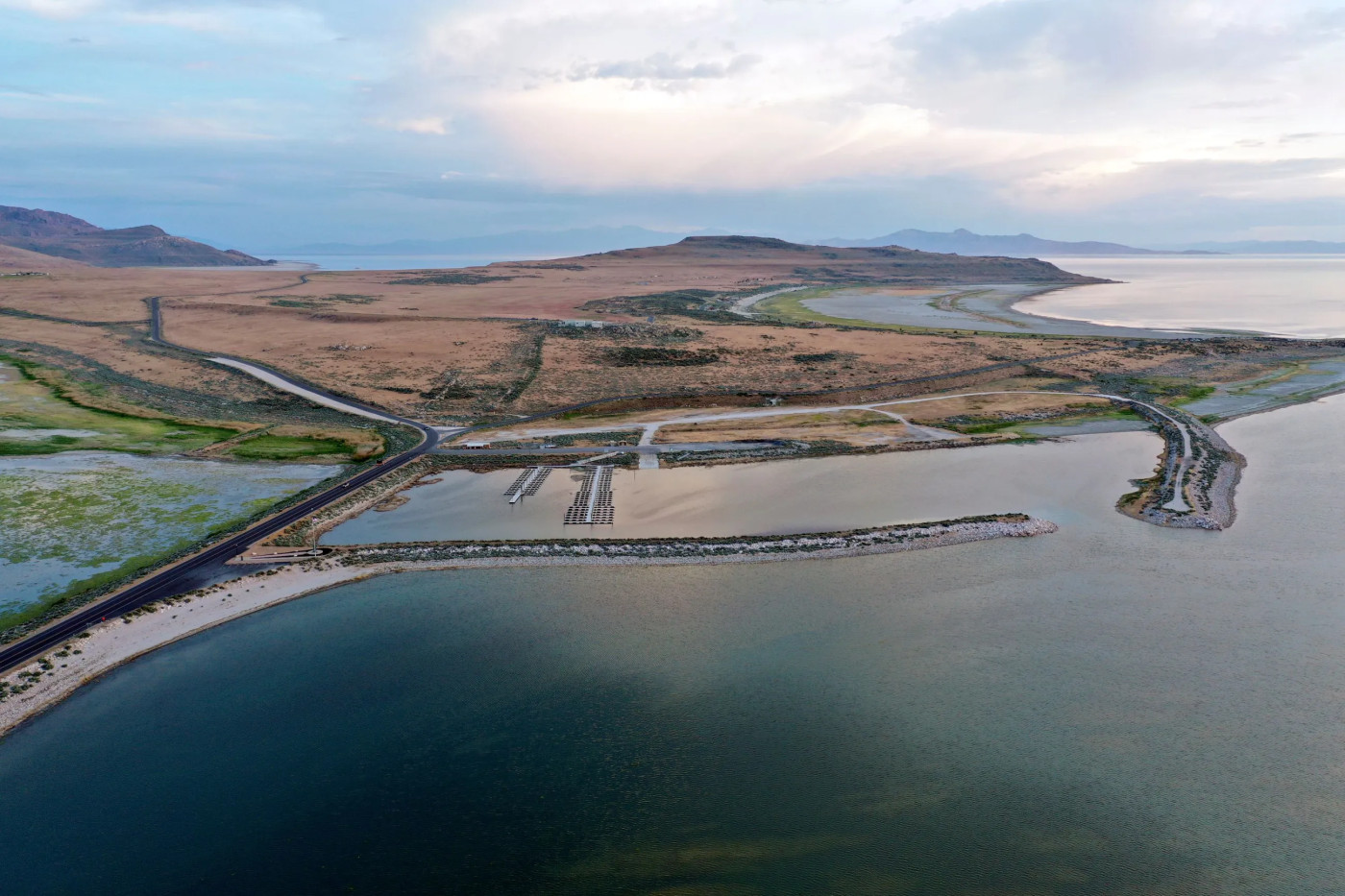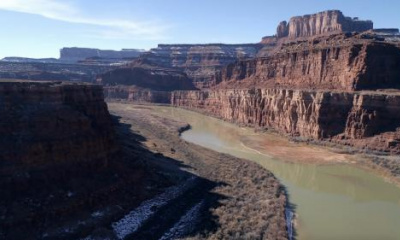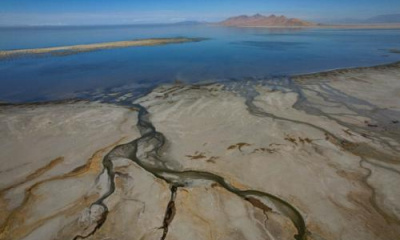Legislation expands spending authority of Central Utah Completion Act
A proposed boost in federal money to help the Great Salt Lake watershed and ultimately the lake itself was introduced Wednesday in Congress by two GOP members of Utah’s delegation.
Sen. Mike Lee and Rep. John Curtis unveiled the Great Salt Lake Stewardship Act, which they say is critical legislation that addresses the dire ecological crisis facing the Great Salt Lake.
The lake dropped to its historic low last year and over 175 years has seen depletion of its tributaries and drought drop it by 11 feet.
Not only does the dwindling health of the lake pose ecological harm, including to wildlife and millions of migrating birds — it threatens air quality and the financial benefit it generates in Utah and on the international stage.
According to the Utah Division of Wildlife Resources, the brine shrimp industry is valued anywhere between $10 million and $60 million, with 21 companies as of this year involved in the harvest that constitutes 45% of the global supply.
That has been put in jeopardy, as well as other uses, including the extraction industry. But there are solutions out there, with this legislation being the latest on the table.
Recognizing the urgent problems that stem from a shrinking lake, the Great Salt Lake Stewardship Act proposes the expansion of the existing water conservation program under the Central Utah Project Completion Act to include the entire Great Salt Lake drainage basin and allows unexpended budget authority available under the Central Utah act to be used for water conservation efforts.
“The Great Salt Lake is immensely valuable to Utahns and the surrounding region. As we face ongoing drought conditions, it is crucial that we take a responsible approach to address the challenges posed to the lake,” Lee said. “This bill presents a thoughtful solution by leveraging existing resources and promoting efficient water conservation practices. By utilizing unexpended budget authority, we can maximize the impact of our conservation efforts without placing an additional burden on taxpayers.”
Under the bill, the Interior secretary would be granted the flexibility to allocate unexpended budget authority from other sections of the Central Utah act towards the existing water conservation program.
Lee and Curtis say by expanding the geographic coverage of the program to include the entire Great Salt Lake drainage basin, the bill would support the efforts of the state of Utah, local communities and water districts north of Salt Lake County in conserving water use and replenishing the lake.
Gene Shawcroft, general manager of the Central Utah Water Conservancy District, praised the legislation that would allow money already allocated to the Central Utah project and repurpose those funds to boost Utah’s water conservation efforts.
“This is one way to replenish and sustain the Great Salt Lake drainage basin during shifting climates,” he said.
Alan Packard, general manager of the Jordan Valley Water Conservancy District, said the bill helps entities in water conservation efforts.
“This legislative approach offers long-term and attainable solutions for addressing the ongoing challenges facing the Great Salt Lake. This legislation is vital for Utah’s water future,” Packard said.
Scott Paxman, general manager of the Weber Basin Water Conservancy District, said the legislation builds on efforts to provide long-term benefits to the Great Salt Lake while not sacrificing the water use needs of the agricultural community and the growing Utah population.
“This legislation led by Sen. Mike Lee and Congressman John Curtis gives Utah another tool to identify and complete water conservation projects that will benefit the basin.”
The tribulations of the Great Salt Lake also prompted Sen. Mitt Romney, R-Utah, to introduce the Great Salt Lake Recovery Act last year, which has since been signed into law by President Joe Biden.
What remains to be seen with this latest effort is if it will enjoy the same success.








